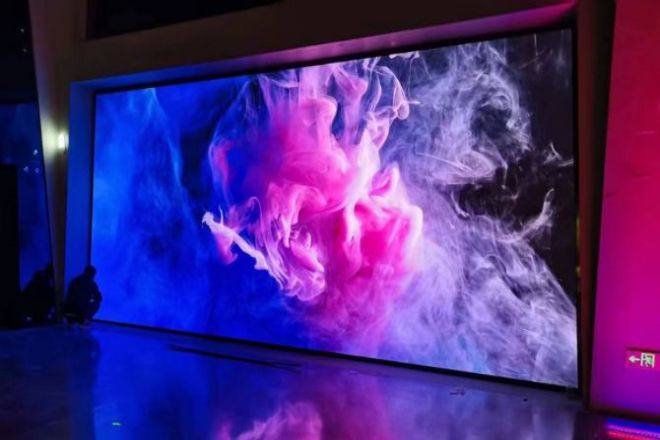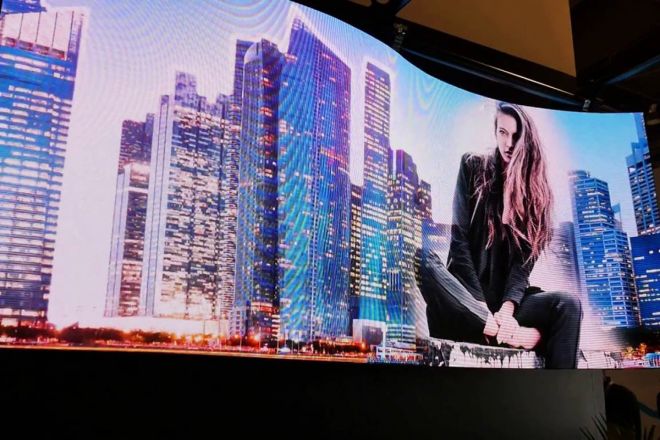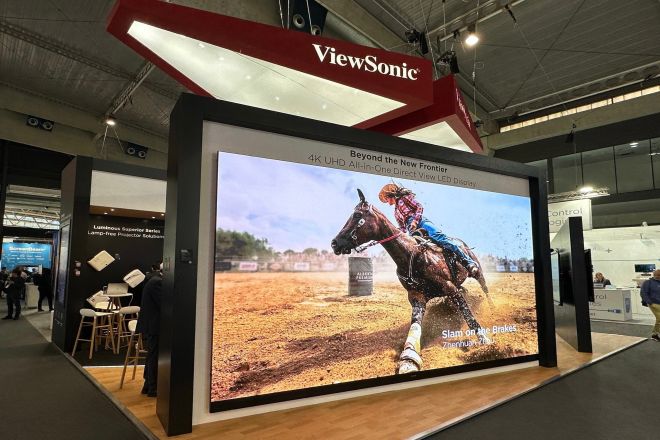Introducción

Con el rápido desarrollo de la ciencia y la tecnología, pantallas de visualización LED have become an important carrier of modern visual communication and information display.
Whether in outdoor advertising, commercial displays, or in stadiums, conference rooms, etc., LED displays play an indispensable role. However, as market competition intensifies and consumer demand increases, image quality, as the core performance indicator of LED displays, becomes increasingly important.
Image quality is not only related to the display effect of the LED display but also directly affects the user experience, advertising effect, and the efficiency of information dissemination. Therefore, how to improve the image quality of LED displays has become the focus of attention both inside and outside the industry.
This article aims to explore the strategies and methods for improving the image quality of LED displays in depth, with a view to providing a valuable reference for technological innovation and market competition in the industry.
1. Analysis of factors affecting LED display quality

The image quality of LED display screens is a complex and comprehensive result of multiple factors. The following is an analysis of the main factors affecting the image quality of LED displays:
1). LED chip performance
The LED chip is the core of the LED display, and its performance directly affects the image quality.
Brightness: The brightness of the LED chip determines the luminous intensity of the display. The higher the brightness, the more vivid the display effect.
Color gamut: The wider the color gamut, the richer the colors the LED display can display and the brighter the picture.
Color uniformity: LED chips with good color uniformity can ensure color consistency across the entire display and avoid chromatic aberration.
2). Display physical structure
The physical structure of the display is also a key factor affecting image quality.
Pixel pitch: The smaller the pixel pitch, the more pixels per unit area, the more delicate the picture display, and the higher the clarity.
Display size and resolution: Large and high-resolution displays provide more pixels, resulting in richer details and clearer images.
Packaging technology and materials: The choice of packaging technology and materials will affect the stability and durability of the LED display, thereby affecting the image quality.
3). Video signal processing technology
Video signal processing technology also has an important impact on the image quality of LED displays.
Image resolution: High-resolution images provide more details and a clearer picture.
Color depth: The deeper the color depth, the more color levels the display can display and the more delicate the picture.
Dynamic Contrast: The higher the dynamic contrast, the better the display performs when displaying images of different brightness, presenting richer details and more realistic colors.
4). Environmental factors
Environmental factors will also have an impact on the image quality of LED displays.
Lighting conditions: Too much or too little light can affect the visibility and clarity of the display.
Viewing distance and angle: Differences in viewing distance and angle will affect the audience’s perception and experience of the display screen.
Temperature and humidity: Too high or too low temperature and changes in humidity may affect the performance and stability of the LED display, thus affecting the image quality.
2. LED display image quality improvement strategy
In order to improve the image quality of LED display screens, we can start from the following aspects:
1). Use high-performance LED chips
Improve brightness and color saturation: Choosing LED chips with higher brightness and better color saturation can improve the brightness, color vividness, and saturation of the display, thus improving the overall picture quality.
Adopt advanced LED packaging technology: Advanced packaging technology can provide better heat dissipation and higher stability, ensuring the stable operation of the LED chip for a long time while reducing light attenuation and maintaining the durability of image quality.
Choose LED chips with long life and good stability: LED chips with long life and good stability can reduce failure rates and maintenance costs while ensuring stable and reliable image quality of the display.
2). Optimize the physical structure of the display screen
Reduce the pixel spacing and improve the resolution: Reducing the pixel spacing can increase the number of pixels per unit area, thereby increasing the resolution, making the picture more delicate, and improving the picture quality.
Design a reasonable matching solution for display size and resolution: Based on application scenarios and needs, designing a reasonable matching solution for display size and resolution can ensure that the display achieves the best balance between visual effects and practicality.
Adopting new packaging materials and processes: Using new packaging materials and processes can improve the durability and stability of the display and reduce image quality degradation caused by environmental factors.
3). Improve video signal processing technology
Introducing high-definition image processing technology: High-definition image processing technologies such as HDR and 4K can significantly improve the clarity and detail expression of images, thus enhancing the image quality of the display.
Adopt advanced color management system: The advanced color management system can ensure the color accuracy and consistency of the display, reduce color aberration and color distortion problems, and improve image quality.
Strengthen dynamic contrast adjustment: Dynamic contrast adjustment technology can automatically adjust contrast according to image content, making the picture more layered and improving image quality.
4) Mejorar la adaptabilidad ambiental
Introducing an ambient light sensor: The display can automatically adjust brightness and contrast to adapt to different lighting conditions and maintain image quality stability and clarity.
Optimize the viewing distance and angle design: Based on the visual characteristics and viewing habits of the human eye, optimizing the viewing distance and angle design of the display screen can improve the visual comfort of the audience, thereby enhancing the picture quality experience.
Enhanced heat dissipation design and waterproof and dustproof measures: Enhanced heat dissipation design and waterproof and dustproof measures can improve the environmental adaptability of the display and ensure stable image quality output in various environments.
By comprehensively applying the above strategies, we can effectively improve the image quality of LED displays and meet users’ needs for a higher-quality visual experience.
3. LED display screen quality improvement technology innovation

With the continuous development of technology, LED display screen quality improvements are also constantly innovating. The following are several important technological innovations that play an important role in improving the image quality of LED displays.
1). Mini LED and Micro LED technology
- Principles and features:
Mini LED and Micro LED technology are both upgraded versions of LED display technology. The size of Mini LED is between traditional LED and Micro LED, while Micro LED achieves pixel-level miniaturization.
These technologies achieve higher resolution and more detailed picture quality by significantly reducing the size of LEDs and increasing pixel density.
- Applications and advantages in image quality improvement:
Mini LED and Micro LED technology can significantly improve the contrast and color saturation of LED displays, making the pictures more vivid and realistic.
These technologies can also reduce graininess and make images smoother and more detailed due to increased pixel density.
- Technical challenges and development trends:
At present, the production cost of Mini LED and Micro LED technology is relatively high and needs to be further reduced to achieve widespread application.
With the advancement of technology and improvement of processes, it is expected that the production costs of these technologies will gradually decrease in the future, and the image quality will also be further improved.
2). Naked-eye 3D technology
- Technical principles and implementation methods:
Naked-eye 3D technology allows viewers to view stereoscopic images without wearing any auxiliary equipment through special display technology and optical design.
Implementation methods include light barrier technology, lenticular lens technology, etc.
- Integration and application in LED display:
Naked-eye 3D technology can be combined with LED displays to bring a more realistic three-dimensional visual experience to the audience.
In fields such as advertising and entertainment, naked-eye 3D LED displays have been widely used.
- Impact on image quality improvement and user experience improvement:
Naked-eye 3D technology can significantly enhance the three-dimensionality and immersion of LED displays, making the images more vivid and realistic.
For viewers, naked eye 3D technology can bring a more shocking and realistic visual experience, increasing the attraction and participation of viewing.
3). Intelligent display technology
- Application of intelligence in LED display:
Intelligent technology can be applied to all aspects of LED displays, including content management, playback control, brightness adjustment, etc.
Through the intelligent control system, the LED display screen can realize remote monitoring, automatic brightness adjustment, and other functions, improving the convenience of use and energy saving effect.
- Optimize image quality processing and display effects through AI technology:
AI technology can intelligently optimize the image quality of LED displays, including color correction, contrast enhancement, etc.
Through the learning and optimization of AI algorithms, LED displays can automatically adapt to different environments and content needs, providing the best image quality.
- Application of intelligence in content recommendation and personalized display:
Intelligent technology can also be applied to the content recommendation and personalized display of LED displays.
By analyzing the audience’s behavior and preference data, the intelligent system can recommend content that is more in line with the audience’s needs and improve audience satisfaction and engagement. At the same time, personalized display settings can be made based on the audience’s location and viewing angle to provide a more personalized visual experience.
Conclusión
To sum up, improving the image quality of LED display screens is a comprehensive project that requires attention from many aspects such as LED chip performance, display physical structure, video signal processing technology, and environmental adaptability.
With the continuous emergence of new display technologies such as Mini LED and Micro LED, as well as the integration and application of innovative technologies such as naked-eye 3D and smart display, the image quality of LED displays is expected to achieve a qualitative leap.
Finalmente, si quieres saber más sobre las pantallas LED, Por favor póngase en contacto con nosotros.
